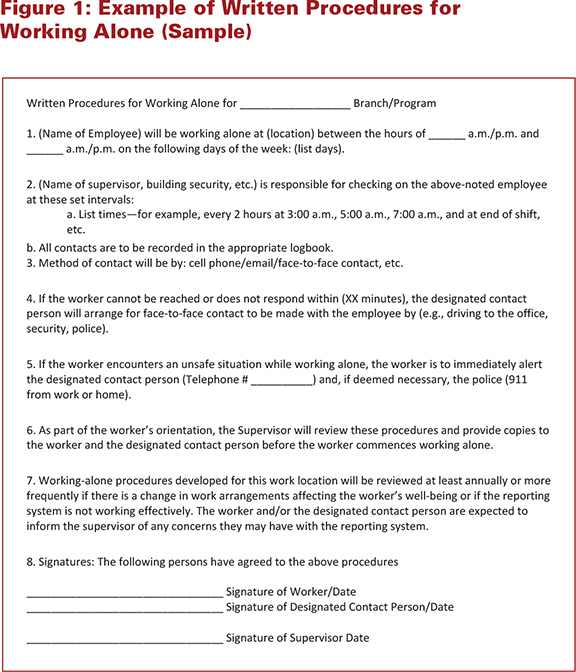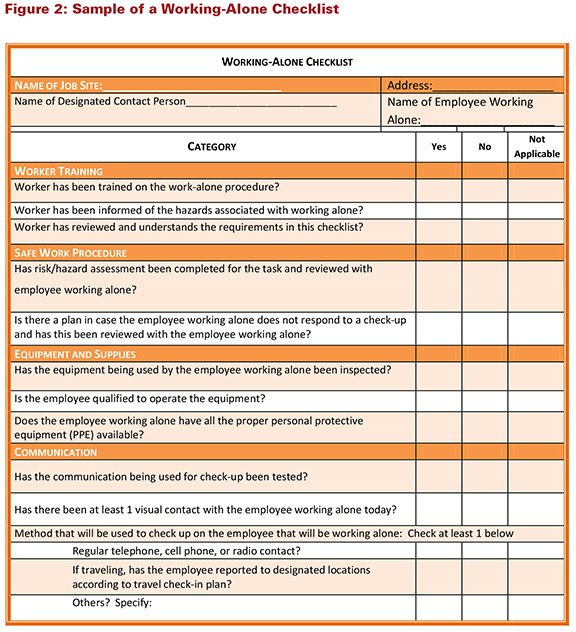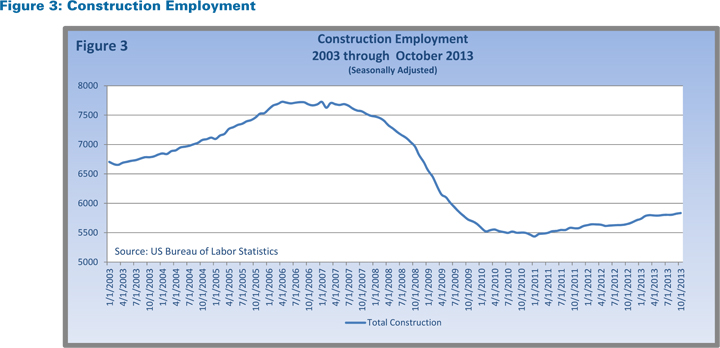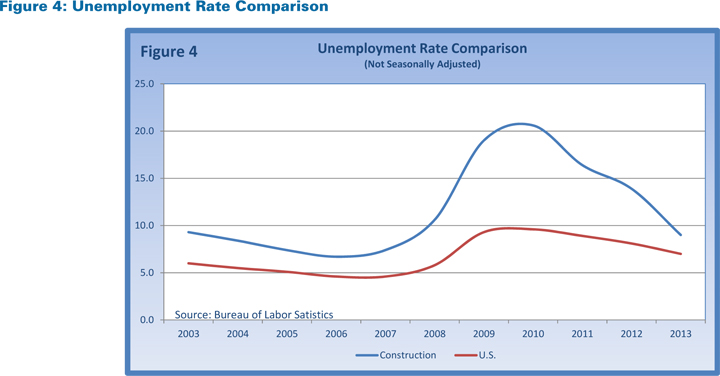A generational change is slowly occurring in
today’s workplace. With the oldest Baby Boomers now reaching the traditional
age of retirement, we are about to see a dramatic shift as these long-time
professionals leave the workforce—and some organizations will face an
accompanying knowledge and skills deficit if they do not take steps to prevent
it.
Approximately 80 million
Boomers are due to retire over the next 15 years. Luckily, this turnover is not
likely to happen overnight. The youngest Baby Boomers are just 49 and probably
not thinking about retirement, while many older Boomers are resisting
retirement and prefer to continue working for financial and personal reasons.
As these workers begin to tender their resignations, they will leave a
noticeable gap; while your organization can easily fill those positions with
willing employees, it may be harder to replace the specialized skills, institutional
knowledge, and on-the-job expertise that your Boomers accumulated over decades.
Will those valuable assets retire along with your oldest experts?
Knowledge Transfer Defined
Take an objective look around your organization. Is
your workforce “graying?” Do you have specific departments or teams with
personnel who are all entering their 50s or 60s at about the same time? If so,
you can take some specific steps to retain their knowledge and skills if and
when they leave. It is crucial to start this process as soon as possible—do not
wait until your older employees start to announce their retirement plans.
The good news is that there are
processes in place for this. The organizational effort of attempting to keep
the job knowledge of employees consistent despite turnover is called knowledge
transfer. Sometimes referred to as knowledge sharing or knowledge continuity
management, knowledge transfer focuses on passing critical knowledge from
exiting employees to their replacements. Do not think of this as an “exit-interview”
strategy where you sit down with Joe Smith a week before he leaves to ask him
everything he knows about his job. Knowledge transfer is an organization-wide
effort to build long-term knowledge continuity across the board.
How do you go about knowledge transfer? Fundamentally, it begins with an
organization’s culture and values—but for today’s businesses, it also involves
intergenerational relations.
Create a Culture of Teaching and Learning
There are many methods for transferring employee knowledge
(see “Knowledge Transfer Methods” above), but for any of them to succeed,
employers must be open to sharing information, encourage employees to teach
each other, and value the knowledge that individual employees hold.
For any type of knowledge sharing,
nothing beats face-to-face interaction, and you will want to encourage passion
and excitement about this type of sharing. Start by reviewing the current
culture and environment within your company, and be prepared to work with what
you have. One way to gauge your environment for learning exchange is to look at
the physical layout of your workspaces. Do you have areas where people can
exchange ideas and information? Are your hallways wide enough to accommodate
conversation? If you see a gathering place—whether it is the break room or an
empty corner—consider installing a whiteboard or flip chart there and see what
happens. Although you cannot mandate knowledge transfer, there are many things
you can do to encourage it. Here are a few broad ideas to get you started.
- Implement learning opportunities throughout your
department or organization. Do not
just talk about learning—institute opportunities that will allow everyone to
learn. This type of learning does not occur through professional development
opportunities (i.e., classroom training), but rather, through knowledge
sharing. Approximately 70% of learning happens on the job, and an additional
20% occurs with and through others. Try asking specific employees to lead
informal “lunch and learns,” start a mentoring program, ask willing Millennial
employees to videotape interviews with company experts and post them on your
intranet—get creative!
- Relax your
definition of “learning.” You must have confidence that your employees want
to do a good job, and let them do it. If you notice your marketing team having
a wind-up toy race, do not assume there is no learning taking place. Not all
learning comes from employee handbooks or training sessions.
- Facilitate
intergenerational interaction. Create forums and general opportunities for
senior experts and leaders to interact with newer and/or younger employees. Opportunities
for cross-generational learning could range from mentoring, to “Ask the Expert”
roundtables, or project reviews.
- Take learning online.
If your organization (or employee base) is
geographically spread out, or if you believe virtual communication would better
suit your employees’ preferences, offer some online venues for sharing
information. These include podcasts and YouTube channels; chatrooms or forums
focused by area of expertise; personal websites or knowledge profiles; or
simply a list of experts who can be contacted for answers, information, and
troubleshooting.
- Enlist
outside help. A trained third-party facilitator can look at your
organization’s culture and values, determine the methods best suited to your
needs, and create a climate that is conducive to knowledge transfer, where
employees are comfortable talking about what they know and what they do not
know.
Narrow Your Focus
Once your cultural foundation for knowledge
exchange has been reinforced, focus teaching and learning opportunities on the
specific knowledge you need transferred. Note that knowledge is both “know how”
and “know why.” There are 2 types of knowledge that employees should pass on:
explicit knowledge, which is easily codified and conveyed to others; and
implicit or tacit knowledge, which is experiential, such as wisdom,
discernment, hunches, instinct, and personal insight. Job profiles or
descriptions and written procedures are a good way to share explicit knowledge.
The problem is that most people jump into a new job, then read the procedures
when they want to find an answer to a specific question—often missing out on
the implicit knowledge they need to fulfill their duties.
All of your organization’s
knowledge is important. What you have to figure out is, what knowledge is
critical or essential for your organization to continue into the future? To
answer this question, consider the following: your vision and business success
drivers, industry trends, current and future core competencies, scarcity, and
replacement costs. Beware of TMI (too much information)—you do not want to
overwhelm or bore those involved—you want to engage learners.
Once you identify specific
areas of knowledge you need to retain, you can draft a plan for recording this
knowledge. However, be careful not to rely solely on “people-to-paper” (or
“people-to-database”) processes such as written guidelines or procedural
handbooks. Create some effective people-to-people methods as well to capture
tacit knowledge. When using technology, this means focusing on live or recorded
“conversations,” including videos and podcasts.
Leverage Generational Preferences
Remember that knowledge sharing is voluntary. You
will need to learn what motivates and demotivates your employees to encourage a
successful transfer of knowledge. A good starting point is addressing
generational preferences, values, and strengths that impact how your employees
work, teach, and learn. Your knowledge transfer methods should take these
preferences into account for maximum effectiveness.
- Baby Boomers
This generation came into the workforce en masse
and made the rules that many companies play by. Many of them define themselves
by their careers and are proud of their accomplishments in the workplace. When
creating a knowledge transfer plan, appeal to their pride and their loyalty to
your organization and your industry, and stress that the plan will help them
leave a legacy. All these motivators relate to the Baby Boomers’ work values
and principles.
- Generation X
The 41 million
members of Generation (Gen) X have had the opportunity to reshape organizations
to meet their generation’s priorities—a sometimes difficult task, given the
sheer numbers and strong personalities of the Baby Boomer generation. Gen Xers
prefer to work independently and are loyal to good bosses, stimulating
projects, and capable team members. Because more than half of them grew up as
latch-key kids, Gen Xers feel strongly that they do not need someone looking
over their shoulder. In other words, they prefer hands-off management;
micromanaging does not work with them.
Like all generations, Gen X
values learning new things and acquiring marketable skills. This trait,
combined with their desire for independence and appreciation for efficiency,
makes them excellent recipients of older workers’ knowledge. Your knowledge
transfer plan can appeal to Gen Xers by emphasizing the value of gaining a
“portable portfolio” of skills and knowledge.
- Millennials
The youngest
generation in today’s workplace has a bit of a “whatever” view of title and
position, showing less reverence for a position that is simply based on
experience, which they think Baby Boomers overemphasize. What they respect is
knowledge and learning. In fact, they will leave for greener pastures if
challenge, learning, and fun are absent from their work. Although they do not
default to deference automatically, Millennials acknowledge that they have much
to learn and they appreciate the wisdom of their more tenured colleagues. The
methods you use for knowledge transfer are key: if you can effectively engage
Millennials, they will soak up the knowledge like sponges! One trait to note is
that they are typically team-oriented and work well in groups, preferring group
work to individual endeavors. If you can harness the use of technology for your
methods, that will also help keep their attention.
Additional Ideas
Baby Boomers—just like employees of all
generations—value learning new things, so do not simply rely on them to teach.
Offer them a chance to keep gaining skills and knowledge in order to keep them
engaged. You might consider a reverse mentoring program, where a more
experienced employee, or even a manager, actively seeks the counsel of an
employee with less overall experience. This modern twist has older employees
depending on younger staff for fresh perspectives, trend spotting, and
technology guidance.
Another option is to establish
lunch and learns with Boomers in mind, with topics like the latest in social
media, personal finance, or health issues. The extra benefit of learning new
things will strengthen their loyalty and commitment as it reinforces your
workplace as one that values learning and skill building in general.
Warning! Pitfalls Ahead
Before you implement your knowledge transfer plan,
consider how your employees might perceive it. If, because of internal
demographics, you are concentrating your efforts on a specific department or
management level, others may think their knowledge is not important to the
organization.
Another potential pitfall is
the possibility that you may focus on transferring one area of knowledge, but
unforeseen changes in the future may make such knowledge obsolete or less
valuable. To mitigate this issue, employers should make knowledge transfer
tools available to anyone who is interested. You will find that it is fairly
easy to extend your knowledge transfer program to include a toolkit for any
employee or manager who requests it.
When you introduce knowledge
transfer to employees, begin by inviting them to participate and acknowledge
each individual and his or her history and skills. Include them in the process,
or they may feel used. Many might also fear that you are asking for their
knowledge because they are going to lose their jobs. Take extra time to stress
their value, their legacy, and the fact that employees of all ages will act as
givers and receivers of knowledge.
Recognize and Reward Employee Efforts
Sharing
knowledge means making an extra effort and sometimes requires additional time
as well as creative thinking. Employees who participate—the recipients as well
as the knowledge holders—should be recognized and rewarded for their efforts.
Thank them, stress the importance and value of what they are doing, and lead by
example. Demonstrating that knowledge transfer is highly valued begins with
your organization’s leaders freely passing on their knowledge and lessons
learned. As an organization, you must acknowledge “legacy leavers,” create
knowledge-sharing champions, and publicly recognize their contribution. All of
this contributes to a culture that values sharing, teaching, and learning.
SIDEBAR #1
Knowledge Transfer Methods
There are many ways
to transfer both explicit and implicit knowledge (see definitions on page 17).
Some of the ones listed here may suit your needs, capabilities, and company
culture, and can be combined as you see fit:
Legacy Development Plans—a facilitator asks employees to
share what they know, and asks them what should be shared. This method shifts
the emphasis to contribution. This can be included in annual performance
appraisals by asking each employee to write up or update what they know when
they prepare for each appraisal. For some older employees nearing retirement,
legacy planning can replace career planning; they can devote their time and
energy to leaving a legacy rather than training and professional development.
Case Studies—a facilitator
interviews the experts and writes up a case study that poses questions about
what it takes to go from good to great work in a specific job. This is
especially useful when it targets something that is the exception to a rule.
Communities of Practice (COPs) or Worknets—COPs are typically groups that may not work together
but have the same body of knowledge. Example: Although Xerox Tech Reps
have the same job, they never see each other—each works alone in the field,
servicing equipment for regional customers. However, they created a COP on
their own by setting up a database of problems and solutions to help each
other, and often arrange to meet informally when possible to talk about work.
COPs usually exist underground, and too much intervention from the employer can
interfere. If you discover a COP within your company—like the employees who
gather outside during smoke breaks—support it, but do not smother it.
Demonstrations—used for highly
technical knowledge, or around more subtle human interactions. Example:
A customer service representative may demonstrate the exact tone of voice they
use when successfully calming down an angry caller.
Designated Experts—identify
your top managers or employees with the most explicit and implicit knowledge,
and appoint them as “subject matter” experts. Encourage them to share their
knowledge, and encourage others in the same job or department to turn to them
for advice.
Document Improv—in any work group, people improvise tricks of the
trade—the “unconscious competence” they use to make things work smoothly. These
are seldom written down or shared, so it is a good idea to ask people to
document the “better practices” they have been improvising so that others can
use them. Remember, documenting can be in the form of videos, audio, or
graphics.
Education and Training—share
knowledge in a formal training session. Your designated “subject matter”
experts can teach classes or provide the information for a trainer to impart.
Find-the-Expert Yellow Pages—list
the people with the answers to every question you can come up with, distribute
or post the list, and encourage all employees to turn to your “yellow pages”
for answers. Use this in combination with a frequently asked questions (FAQ)
document.
Hands-on Brown Bags—gather a
department or group of people together over a brown-bag snack to listen to a
designated expert. Include a question-and-answer session or dialogue.
Interviews—have a facilitator or skilled employee conduct a
journalist-style interview with each expert on your staff. Record the interview
and make it available to others in writing, audio, and/or video.
Job Aids—create checklists,
quick-start guides, forms, tips, and templates—any tools that may help
accomplish a task. This is a method that every organization can and should
include in their knowledge transfer plan.
Job Historians—this is ideal
for a retiree or new employee with special training. Have them interview each
long-time employee/expert, and create a timeline of that person’s employment at
the company, as well as a timeline of how they typically spend their time on
the job.
Job Shadowing—assign newer
employees to follow experts around and learn how they work. The length of time
spent on this will vary, depending on the job, but it should be at least 90
days.
Knowledge Profiles—this
rigorous process is used quite often. It entails writing a profile of
everything an expert knows—typically technical or detail-oriented. The profile
can then be put online where other people in similar jobs can access it.
Lessons Learned—there are
several methods for sharing lessons learned. They can be written down, or you
can schedule a Failure Friday forum for employees to get together and talk
about disasters and how they were handled. This demonstrates what can go wrong,
as well as what can be done, and can instill confidence in others that they can
handle problems. You can also host a “lessons of experience” discussion where
experienced managers transfer wisdom to newer managers.
Master Forums—ask one of your
experts to speak on a topic and make the presentation available to everyone in
your company. The National Aeronautics and Space Administration (NASA) does
this. Consider using a shared drive where PowerPoint presentations can be
archived and made available to everyone.
Master-Apprentice Programs—this
mentoring style is typically used in bargaining units or unions that employ
skill tests for employees who wish to become “masters” of their trade.
Mentoring (One-on-One)—mentors and their partners should self-select each
other, and be given structure and tools to support their learning process. Many
mentors find that the first phase of the learning is all about explicit
knowledge. Then, after 4 or 5 months, an interesting shift happens, and
mentoring focuses more on “how I do it” rather than “what I do.” (Mentoring
will be covered in more detail in the April/May issue of Insulation Outlook.)
Mentoring (Group)—this tactic
makes use of a scarce mentor set. Match a senior mentor up with a small group
to spread out your resources. This can help the members of the group form their
own COP.
Personal Websites—used by
Microsoft, this method has everyone set up a personal page or site on the
company intranet to share knowledge. You may set up guidelines for the sites,
such as requiring an FAQ format, or an interactive forum for answering
questions. (Remember, technology enables knowledge transfer—alone, it does not
hold all the answers.)
Shared Diaries—people write up
a job history in real-time online. Others can see what is happening in other
departments (or their own) and may build a COP.
Storytelling—a facilitator can
teach people in your organization how to tell stories—because stories leave
more of an imprint than other communications. Basically an oral history,
storytelling also conveys the values of your organization, reveals who the
heroes and villains are, what the culture is, how people are rewarded, and how people
work. You can schedule weekly or monthly storytelling sessions, make
storytelling part of your annual meeting, or simply train employees and let
them practice around the coffee pot or in the hallways.
Talk/Chat Rooms—make online
communities available to employees so they can share knowledge, answer each
other’s questions, and give advice.
Traveling Masters—this is
particularly useful when you only have a few experts in a given role. Have them
travel around to various offices or departments and give presentations on their
unique knowledge. Like group mentoring, this is a good method if you have
scarce expert resources.
“Tribal Elder” Campfires—a lot
like storytelling, this method is built on a respect or reverence for someone
in your organization who has done something exceptional. Tribal elders are
those who embody the values of an organization, and having them host a
“campfire” provides a terrific opportunity for powerful conversations and
dialogue, and is a natural way to stress leaving a legacy.
SIDEBAR #2
Silents
(1933–1945)
Baby
Boomers (1946–1964)
Generation
X (1965–1976)
Millennials (1977–1998)









